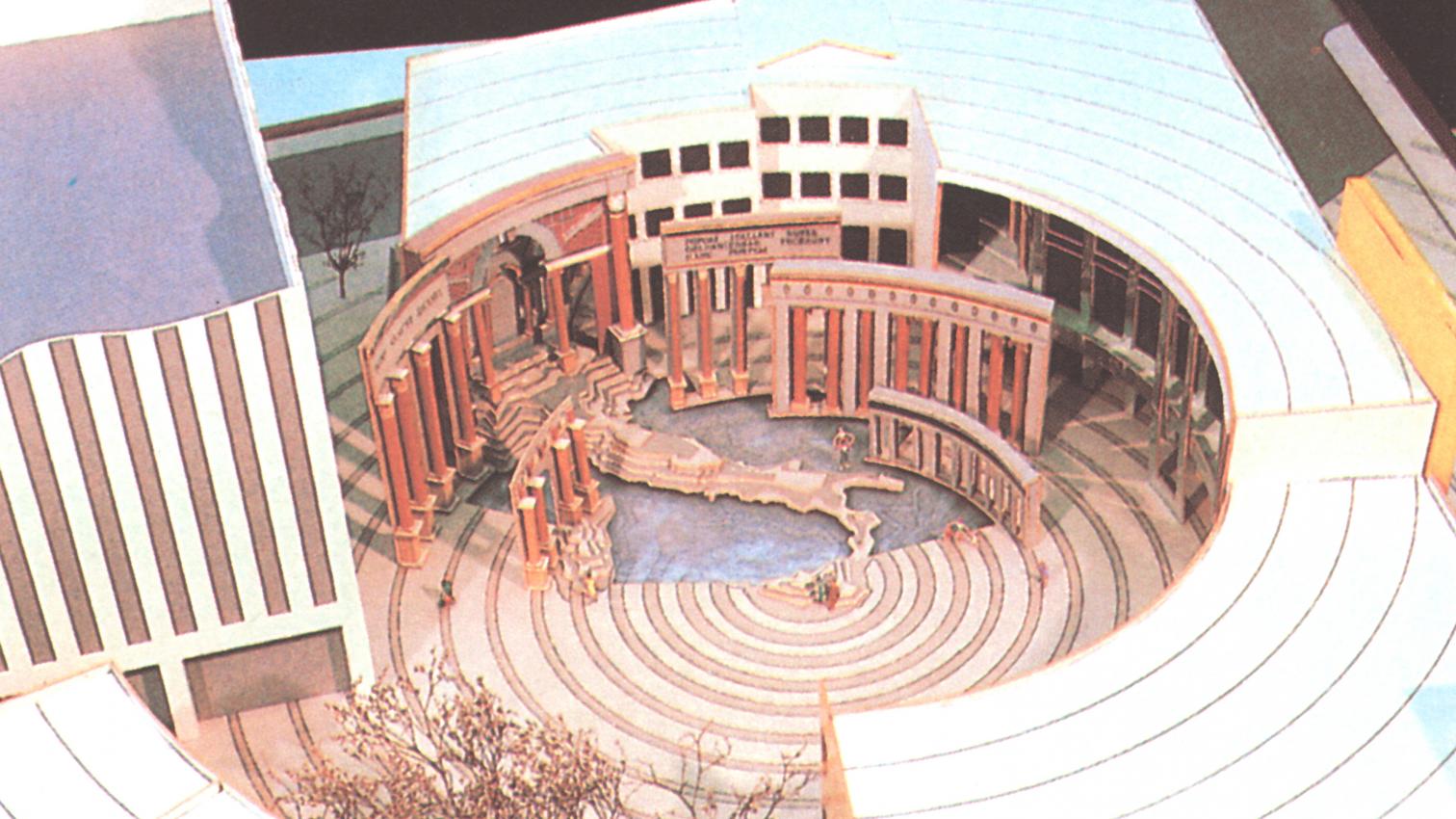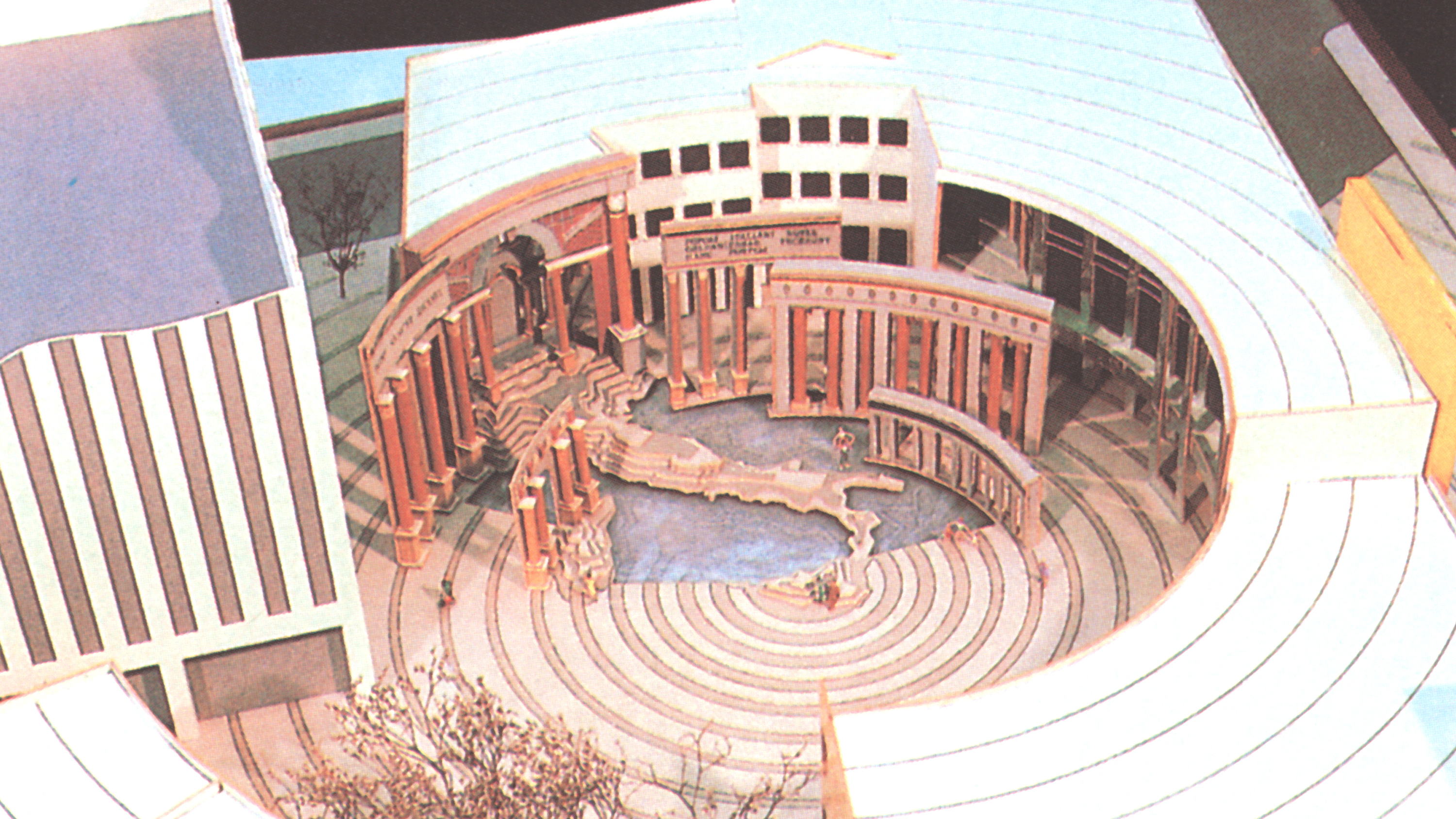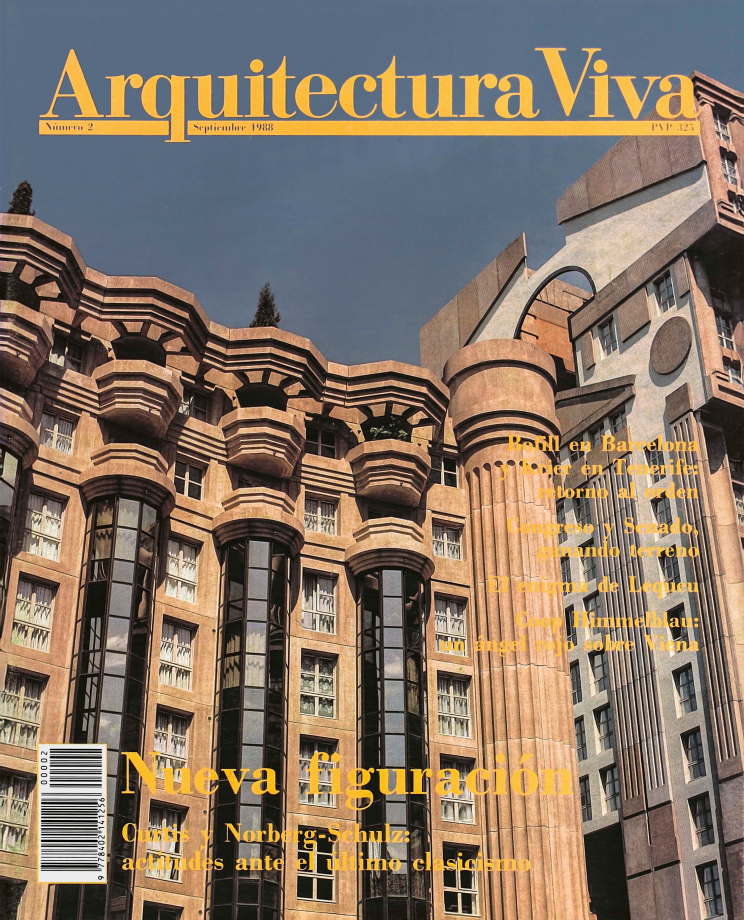
Moore, Piazza d 'Italia, 1975-78
Macaronic classicism
The difference between authentic synthesis and superficial pastiche is something to keep in mind when dealing with the subject of postmodern classicism, about which so much has been said and written in recent years. Charles Jencks, the movement's chief salesman – according to some, its fabulist – has claimed that it offers a new lingua franca – he dares not say “international style” – but he is also at pains to show how sensitive this style is to specific regions and urban settings. Social concern is addressed by recourse to the “double code,” so that both ordinary people and architectural elites can taste its displays of ingenuity. Ornament is valued for its decorative potential and because it enables representation: it is even suggested that buildings replete with references must mean more than those that are not. Postmodern classicism does not encourage the revitalization of any particular moment in the classical tradition; on the contrary, it revels in the promiscuous possibilities now offered by air travel and slides: all periods count, and the technique of bricolage is often used to link references together. This is sometimes described as social pluralism, but the result often smacks of a merely academic formalism...[+]






